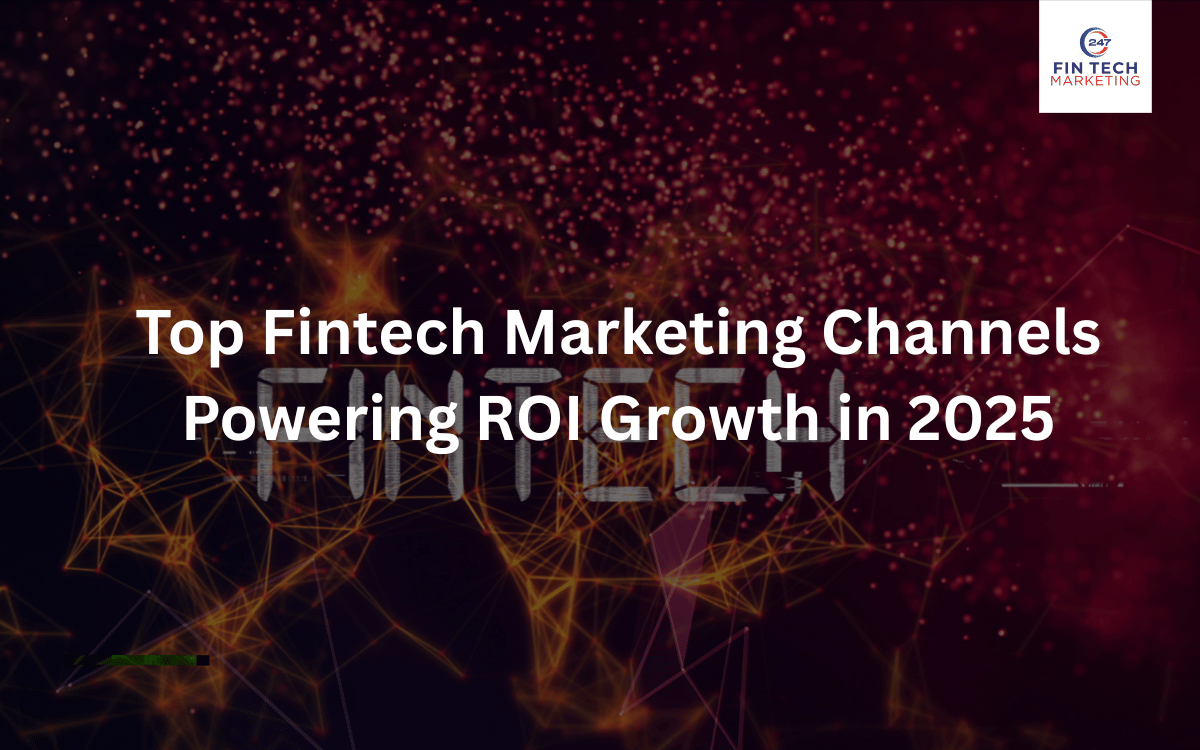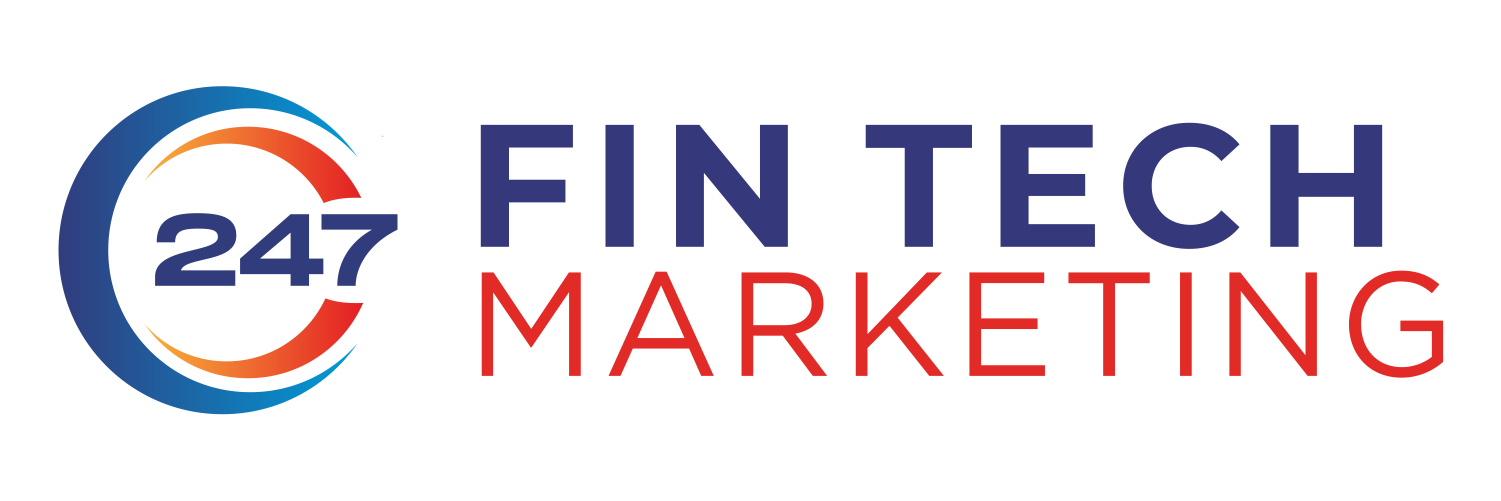
The fintech sector is growing at break-neck speed with new apps, neobanks, digital lenders, crypto/investment platforms, and embedded-finance players are entering the fray. With so many players vying for attention and capital, one thing has become non-negotiable: measurable ROI from marketing investments. Not all channels deliver the same return, and in 2025, fintech marketers must be more strategic than ever about where they place their bets.
A Fintech Marketing Agency helps brands navigate this competitive landscape with data-driven strategies, performance-focused campaigns, and deep industry expertise. As competition intensifies, the difference between growth and stagnation often comes down to picking the right channels and executing them smartly.
Here are the top channels fintech marketers should prioritize in 2025 and what to avoid.
1. Search Engine Optimization (SEO) & Paid Search
Why they remain foundational
For fintech firms, both SEO and Paid Search continue to play a core role because they capture intent-driven traffic users actively searching for solutions like “digital loans”, “crypto trading app”, “business savings account” etc. In an industry where trust, relevance and clarity matter, high-value keywords often translate into better conversion opportunities. As one recent fintech-marketing review puts it: “These are powerful marketing channels for fintech as they help drive organic and paid traffic.”
Also, the nature of the fintech offering (often regulatory, high-touch, trust-based) means the website and landing page experience matter a lot for SEO ranking, for conversion, and for retention. A Fintech SEO Services provider focuses on optimizing these elements to ensure fintech brands build trust, improve visibility, and drive qualified traffic. For example: mobile responsiveness, page speed, secure HTTPS, and clean UX all matter.
Best practices specifically for fintech
- Keyword strategy: Focus on long-tail, high-intent keywords. E.g., “best digital loans for small businesses in 2025” is a good example.
- Authority & trust content: Publish high-quality content that shows expertise (e.g., “how to build credit as a gig-worker with a fintech loan”), cites regulatory/legal frameworks, uses plain language. Google’s EEAT (Experience-Expertise-Authoritativeness-Trustworthiness) is becoming more important.
- Technical SEO & UX: Ensure your site loads quickly, is mobile-first, has streamlined forms, secure connection, and an experience that aligns with the high-stakes nature of financial decisions.
- Balance organic vs paid: Paid search can drive rapid acquisition, but organic builds a sustainable funnel. A recent table showed SEO delivering very high ROI over time in fintech when correctly executed (e.g., 748% in one dataset) whereas PPC gave quicker but less enduring returns.
- Tracking & measurement: Track ROI beyond clicks look at cost per acquisition (CPA), lead-to-activation rate, lifetime value (LTV). For paid search, look at keywords, ad copy, landing page conversion rate. For SEO, monitor organic traffic, ranking for key terms, conversion from organic, and how that converts to revenue.
2. Social Media Advertising
Why social remains critical in fintech for 2025
Social platforms such as TikTok, Instagram and LinkedIn are increasingly important in fintech for several reasons:
- They reach younger digital-native audiences who are open to non-traditional financial products.
- They allow more creative, narrative-driven, trust-building content (especially important when financial offerings can be complex).
- Ads spent in fintech digital advertising is growing fast (one source: 45%+ increase over the past few years).
- Social platforms are not just for brand awareness with proper targeting and measurement they can drive conversions, app installs, leads.
B2B vs B2C fintech distinctions
- B2B fintech: LinkedIn is often the gold-standard for reaching decision-makers in firms, promoting thought-leadership content, sponsored posts targeting job titles/function, etc.
- B2C fintech: TikTok and Instagram shine for younger demographics short-form educational videos, influencer tie-ins, dynamic ads showing everyday benefits.
What works best practices & tips
- Platform-specific creative: Short-form videos, reels, live sessions, Stories work best for Instagram/TikTok; carousel ads, sponsored posts, articles/whitepapers work for LinkedIn.
- Influencer tie-ins (see next section) can super-charge social campaigns: when a trusted creator uses/explains your fintech product authentically, the engagement and conversion lift can be significant.
- Targeting & retargeting: Use look-alike audiences, behavioral targeting, retarget those who visited your site but didn’t convert. Tie the ad to a high-quality landing page with a clear CTA.
- Measurement & linking to ROI: Track not just impressions or clicks, but leads, app installs, activation, first transaction and LTV. Map social ads are spent to revenue outcomes.
- Emerging trends:
- Live video & interactive formats (e.g., Instagram Live Q&As on “how to start investing”)
- Micro-influencer campaigns (smaller niche creators with high trust in their community)
- Short-form vertical video (15-60 sec) that breaks down a feature or benefit simply
- Social commerce/in-app call-to-action integration (especially in markets like India)
3. Email Marketing
Why email remains a high-ROI channel for fintech
Despite the surge of new channels, email marketing continues to deliver strong ROI especially when the offering requires education, nurturing and longer sales cycles (which many fintech products do). For example, one article notes that B2B email marketing conversion rates are around ~2.4% in fintech contexts.
Also, email remains a controlled channel (you own your list), which is especially valuable in regulated, trust-sensitive sectors like fintech.
Best practices & actionable tips
- Segmentation: Segment your audience by industry (for B2B), by location, by user behavior (for B2C). For example, new leads vs engaged user’s vs inactive users.
- Automation / onboarding flows: When a user signs up, send a welcome sequence, product education emails, reminders to complete KYC or deposit. For inactive users, send re-engagement flows.
- Quality over quantity: Don’t bombard your list. Focus on sending value-driven emails (education, insights, product benefit) rather than promotional noise. As one source says, “you shouldn’t bombard your audiences with lots of emails” in fintech.
- Measure beyond open rates: While open and click-through are good metrics, in fintech you want conversion (account activated, first transaction), and ultimately revenue or LTV.
- Integrate with other channels: Use email to drive users to social campaigns, content offers, webinars. Use email to support retargeting e.g., someone who clicked a link in email but didn’t convert trigger a paid retarget ad.
- Personalization: Use user data (behavior, product usage) to tailor subject lines, content, offers. Personalized emails can significantly outperform generic blasts.
4. Influencer Marketing
Why influences matter in fintech
In 2025, marketing in fintech influenced maturity beyond simple sponsorships. With consumers increasingly distrustful of traditional advertising but receptive to peer-style recommendations, financial influencers (personal-finance YouTubers, crypto/investment creators, savings-hack Instagrammers) have become valuable partners. One research piece said: “Financial influencer marketing brings 11× more ROI than standard display ads.”
Trust is particularly critical in fintech: users are giving access to financial data, expecting security and reliability. An influencer who has built credibility can bridge that trust gap.
Guidance & best practices
- Right influencer + niche fit: If you’re promoting a savings app, collaborate with a personal-finance influencer whose audience is savings-focused. If you’re promoting crypto trading, then a crypto/investment influencer makes sense. Generic influencers won’t cut it.
- Clear goals and tracking: Define what you want (app installs, business leads, credit applications). Provide the influencer with a unique referral code, affiliate link or trackable UTM parameter so you can measure actual conversions, not just impressions.
- Regulation & compliance: In financial services, you must ensure that influencer messaging is compliant (disclaimers, accurate information, no misleading claims). Vet the influencer’s previous audience and content for red flags.
- Measure deeper than vanity metrics: Rather than just followers, look at engagement, conversion, retention and ideally LTV of users acquired via influencer campaigns.
- Long-term relationships over one-off posts: A one-off influencer mention may spike installs but building a continuous partner programme can deliver sustained ROI, build community and trust.
5. Online Forums & Communities
Why this channel is powerful for fintech
Forums, communities and platforms like Discord, Reddit and private user-groups are becoming key assets for fintech brands. According to current research: fintech and finance brands that build and engage communities see higher loyalty, more referrals, and deeper trust.
In an industry where users often have questions, concerns and require peer validation (e.g., “Is this app safe?”, “Has anyone else done a loan with X?”, “How do I start crypto trading?”), being present in community channels is a strategic differentiator.
Actionable suggestions
- Choose the right platform: Identify where your audience naturally congregates. For B2B fintech maybe LinkedIn groups or Slack communities; for crypto/consumer fintech maybe Reddit threads, Discord servers, Telegram groups.
- Become a trusted voice: Don’t just sell. Offer expert insights, host Q&A sessions, run webinars or AMA (Ask-Me-Anything) events. Offer value community respects authenticity.
- Listen and collect feedback: Use community channels for product feedback, feature requests, bug hunting. The insight from users can improve both product and fuel marketing content
- Track engagement and sentiment: Monitor community posts, sentiment, questions asked, issues raised. Use this as both a marketing and product intelligence tool.
- Convert engagement into leads: When community members engage with content, present clear next steps: e.g., link to a landing page, invite to a demo, offer early access. But avoiding overly promotional tone kills trust.
6. What to Avoid
In parallel with picking the right channels, fintech marketers must steer clear of common mistakes. Based on recent analyses, here are key things not to do:
- Over-relying on traditional marketing channels: TV, radio, broad print ads may still have a place, but for fintech ROI-driven acquisition these channels lack the targeting, measurability and scalability of digital channels.
- Not defining your audience: Without a clear customer profile (segment, behavior, need), you’ll likely mis-spend budget on users who will not convert or will churn.
- Using generic messages: In fintech, users expect relevance, trust, and clarity. Generic “one-size-fits-all” marketing doesn’t cut it. Personalization is increasingly expected.
- Ignoring tracking, data and measurement: If you deploy campaigns but cannot tie them to outcomes (acquisition, conversion, LTV), you’ll be flying blind.
- Neglecting compliance/trust elements: In fintech, mis-messaging or misleading claims can damage trust, attract regulatory scrutiny and harm reputation.
- Ignoring the mobile and UX layer: Many fintech users engage via mobile. If your site/app experience is poor, high bounce and low conversion will kill your ROI.
Conclusion
In 2025, fintech companies that want to break through the noise and deliver true ROI from marketing will choose wisely among channels and execute with precision. A robust channel mix might look like:
- SEO & Paid Search as the foundational acquisition engine
- Social Media Advertising for awareness, engagement and targeted conversion
- Email Marketing for nurturing, retention and high-value conversion
- Influencer Marketing for trust-building, peer-style recommendations and niche reach
- Online Forums & Communities for building loyalty, gathering insight and converting engaged users
By avoiding the common pitfalls generic messaging, traditional channels without measurable ROI, neglect of tracking or mobile UX fintech firms can maximize their marketing budgets. Incorporating Social Media Marketing into their overall strategy allows brands to engage audiences, build trust, and drive measurable growth. The key: map your channel plan, define clear KPIs (CAC, LTV, conversion rate, retention), test and optimize continuously, and stay agile as consumer behaviors and technology (AI, mobile-first, voice search) evolve.
Author
Mitesh Patel
Mitesh Patel is the co-founder of 247 FinTech Marketing, LawFirm Marketing and a columnist. He helps companies like Emerson and other top Fortune 500 compnies to grow their revenue.







